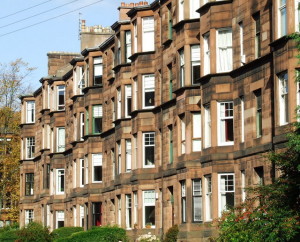The new regime on property income and interest relief is now in force.
This was the surprise announcement in the Summer Budget 2015 restricting income tax relief for interest costs incurred by landlords of residential properties became law in November 2015. Any hopes that the Chancellor would change his mind were dashed in the Autumn Statement in December when additional charges to Stamp Duty Land Tax on purchases and acceleration of capital gains tax on sale were announced.
From April 2017, income tax relief will start to be restricted to the basic rate of tax. The restriction will be phased in over four years and therefore be fully in place by 2020/21. In the first year the restriction will apply to 25% of the interest, then 50% the year after and 75% in the third.
The new rules only apply to residential properties and do not apply to companies or furnished holiday lettings. The restrictions apply to any interest and finance costs and so would also limit mortgage application fees and interest costs on loans to buy fixtures or furniture.
When thinking of investing in a new residential property, careful consideration should be given to the amount of tax relief to decide on the viability of taking on a new loan.
How much extra tax will this mean?
The additional amounts of tax arising will depend on the marginal rate of tax for the taxpayer. Basic rate taxpayers should not be substantively affected by the proposals. A higher rate taxpayer will, in principle, get 20% less relief for finance costs.
However the calculation method may mean that some taxpayers move into higher rate tax brackets. The following example illustrates this situation.
Example
Consider the 2020/21 tax year when the transitional period is over. Let’s assume that the personal allowance is £12,000 and the basic rate band is £38,000 meaning that the higher rate band starts at £50,000. Toni has a salary of £35,000, rental income before interest of £23,000 and interest on the property mortgage of £8,000.
Under the current tax rules, taxable rental income is £15,000. He will not pay higher rate tax as his total income is £50,000 – the point from which higher rate tax is payable.
With the new rules, taxable rental income is £23,000. So £8,000 is taxable at 40% – £3,200. Interest relief is given after having computed the tax liability on his income. The relief is £8,000 at 20% – £1,600. So an extra £1,600 tax is payable.
Can it get worse than this?
Yes it can. Other things to watch for include:
- The amount of the interest relief is restricted where either total property income or total taxable income (excluding savings and dividend income) of the landlord is lower than the finance costs For example, if net property income is £4,500 before interest of £6,000, the landlord is making a £1,500 loss. Despite this £4,500 is taxable. Also the interest relief is restricted to £4,500 at 20% rather than £6,000 at 20%. The unrelieved interest (£1,500 at 20%) is carried forward and may get tax relief in a later year.
- Child benefit is clawed back if ‘adjusted net income’ of a couple with children is above £50,000. Interest will not be deductible in the calculation of ‘adjusted net income’.
- The personal allowance is reduced if ‘adjusted net income’ is above £100,000.

